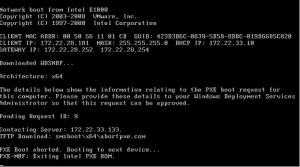How to Fix Automatic Repair Loop in Windows 10 – “Startup Repair Couldn’t Repair Your PC”



How to Fix Automatic Repair Loop in Windows 10 – “Startup Repair Couldn’t Repair Your PC”
Is your Windows 10 PC caught in a seemingly endless cycle of “Automatic Repair”? Have you received the vexing message, “Startup Repair couldn’t repair your PC”? This frustrating scenario is more common than you might think. It’s a frequent occurrence among Windows 10 users and can be caused by various factors. In this comprehensive guide, we’ll delve into the nitty-gritty details of the Automatic Repair loop issue and provide you with an array of solutions to help you break free from this vexing cycle and restore your PC’s normal functionality.
Understanding the Automatic Repair Loop
Before we explore the solutions, let’s take a closer look at why the Automatic Repair loop occurs. This problem arises when Windows detects an issue during startup that prevents it from loading correctly. In an attempt to resolve the problem, Windows initiates the Automatic Repair process. However, if this process fails to fix the issue or if there’s an underlying problem that’s not easily repaired, you’ll find yourself trapped in this recurring loop.
Solution 1: Restart Your PC
Let’s start with a simple yet effective solution. Sometimes, a straightforward restart can do wonders:
Turn off your PC entirely.
Wait for a few seconds and then power it back on.
Believe it or not, this basic action can often break the Automatic Repair loop, allowing your PC to start up normally. It’s a quick and easy first step to try.
Solution 2: Boot into Safe Mode
Safe Mode is a diagnostic mode that allows your PC to start with a minimal set of drivers and services. It can be a useful troubleshooting tool:
Turn off your PC and then turn it back on.
As soon as it starts to boot, press and hold the F8 or Shift + F8 key repeatedly. This should bring up the Advanced Boot Options menu.
Select “Safe Mode” and press Enter.
Once in Safe Mode, you can uninstall any recently installed drivers or applications that may be causing the problem.
Solution 3: Use System Restore
If you’ve created a system restore point in the past, you can utilize it to revert your system to a previous state when it was functioning correctly:
Boot into the Advanced Boot Options menu as mentioned earlier.
Select “Repair your computer” and choose “Troubleshoot” > “Advanced options” > “System Restore.”
Follow the on-screen instructions to restore your system to a state where the Automatic Repair loop wasn’t an issue.
Solution 4: Check Disk Utility
Sometimes, the root cause of the issue lies in disk errors. To address this, you can use the Check Disk utility to scan and repair problems with your hard drive:
Access the Advanced Boot Options menu.
Choose “Troubleshoot” > “Advanced options” > “Command Prompt.”
In the Command Prompt, type “chkdsk /f” and press Enter.
This utility will scan for and rectify disk errors, potentially resolving the issue.
Solution 5: Rebuild the BCD (Boot Configuration Data)
Corrupted or misconfigured Boot Configuration Data can lead to startup problems. Here’s how to rebuild it:
Access the Advanced Boot Options menu.
Select “Command Prompt.”
In the Command Prompt, type the following commands one by one:
- bootrec /fixmbr
bootrec /fixboot
bootrec /scanos
bootrec /rebuildbcd
Follow the prompts and allow the commands to complete their tasks. Rebuilding the BCD can often resolve boot-related issues.
Solution 6: Perform a Windows 10 Repair Install
If none of the above solutions yield results, you can consider performing a repair install of Windows 10. This process allows you to reinstall Windows without losing your personal files and applications:
Create a Windows 10 installation USB or DVD.
Boot your PC from the installation media.
Select “Install Now,” but do not enter a product key.
Choose “Custom: Install Windows only (advanced).”
Select the partition containing your existing Windows installation and click “Next.” Windows will be reinstalled while preserving your files and applications.
Tips to Prevent the Automatic Repair Loop:
To avoid falling into the Automatic Repair loop in the future, consider these preventive measures:
Keep your drivers and Windows up to date to prevent compatibility issues.
Exercise caution when installing third-party software, as certain programs may conflict with your system.
Regularly create and maintain system restore points as a safety net for system recovery.
Back up your essential data regularly to prevent data loss during troubleshooting.
For a more visual guide on implementing these solutions, you can refer to this [YouTube tutorial](insert YouTube URL here):
[YouTube Tutorial: How to Fix Automatic Repair Loop in Windows 10](insert YouTube URL here)
By following these comprehensive and detailed steps, you should be equipped to resolve the “Automatic Repair couldn’t repair your PC” issue in Windows 10 and restore your PC’s functionality. Remember to stay patient and systematic while troubleshooting to ensure a successful resolution.
Conclusion
Encountering the “Automatic Repair” loop in Windows 10 can be frustrating, but with the right knowledge and steps, you can regain control of your PC and rectify the issue. Whether it’s a straightforward restart or a more advanced repair install, these solutions offer a variety of options to help you break free from the endless loop and restore your system to normal operation.








